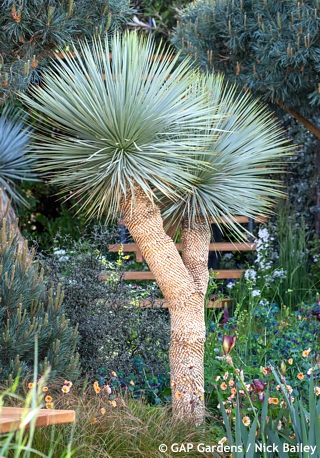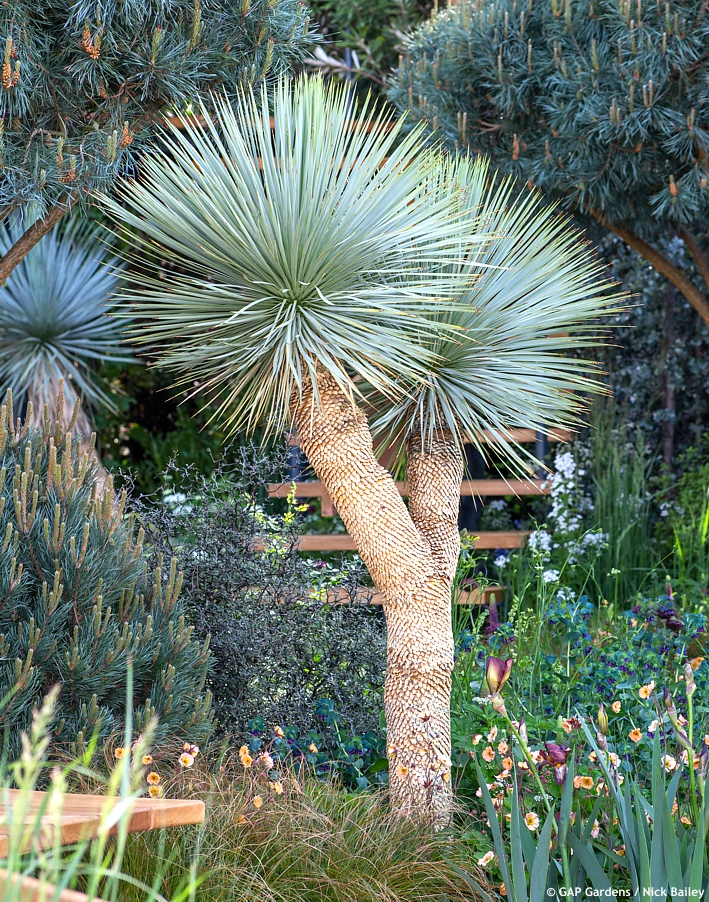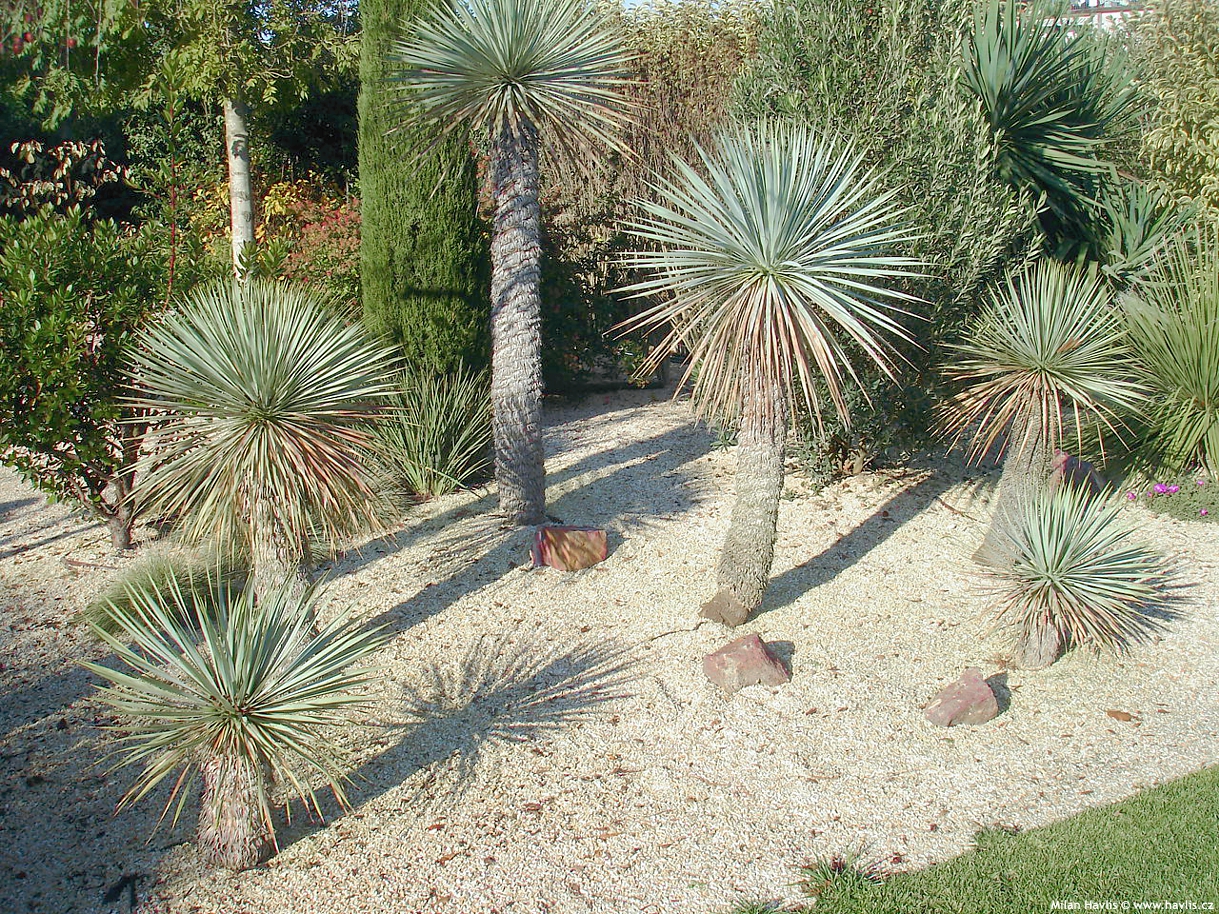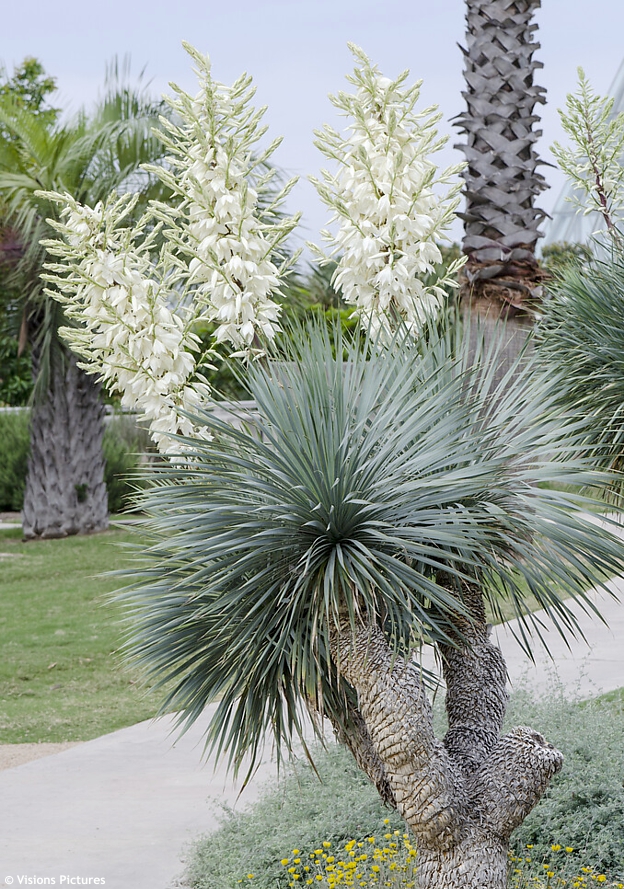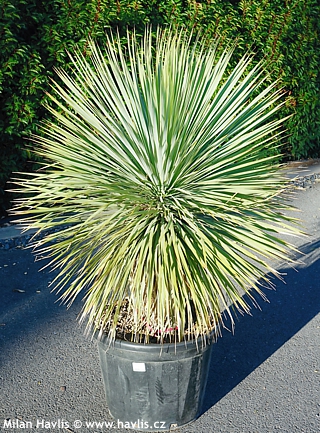Yucca rostrata beaked yucca
Yucca
Trunk-forming yuccas are an exotic addition to dry xeriscape gardens which consists of solely trees, shrubs, and perennials that tolerate or even require complete drought for long periods and where watering is banned. Desert garden is another word often used since most of these plants come from the desert areas in Central America – from the deserts of the southwestern states of the USA to Mexico. Beaked yucca is native to Texas and the Mexican states of Chihuahua and Coahuila, and in our climate (USDA zone 6) it is particularly popular for its exceptional hardiness and tolerance to snow as it can withstand temperatures down to -27 °C in good conditions, and because it forms a trunk and looks like a palm tree.
Beaked yucca is a tree-like yucca with evergreen, steel-blue leaves formed in a dense rosette. The blades are 40-60 cm long and only 1-1.5 cm wide. You can also come across specimens with a thin yellow margin but those do not seem to be considered separate or named varieties, only mutations of the species. The leaves are rigid but even though they have a prickly tip they are not sharp or dangerous like those of y. gloriosa or y. aloifolia. When the leaves mature they become dry and bend, forming a skirt that makes the trunk invisible. They are best removed to reveal the trunk and its size.
The thickness if the trunk depends on the type of cultivation – in American nurseries, where plants are grown especially for export and have ideal growing conditions they are often fertilized abundantly and soon develop tall but thin trunks. Naturally, field-grown specimens, most often from Mexico, have thick trunks with large rosettes of foliage. Since plants must be transported without soil or substrate during import to another continent, we were able to see their roots. It is incredible how short the roots of this yucca can be to survive and even thrive. It exhibits that yucca plants receive most of their moisture from the air, just like for example the famous elephant's foot (Beaucarnea recurvata), which seems to grow just out of your admiration.
Same as other yuccas this yucca blooms, too, but it takes many years and long, hot summers to produce flowers. They are almost identical to the ones you know from low growing yuccas. They are large, beige to creamy white bells grouped in massive, upright panicles. After flowering the stem may split but it is not a rule.
In our country, it grows rather slowly and a height of one meter from a stemless seedling can be expected in 10 or more years. In its home it grows twice as fast, and its final height is between 3 and 4 meters. We'll be happy if we get at least half of it, do you agree? 😊
Yuccas look great if they are placed in a landscape where they will contrast with other plants in the garden and where their unusual architecture will complement the exotic atmosphere. If you are making a xeriscape garden, use a lot of various gravel, pebbles, and sand instead of mulch to cover the ground, and enhance the exotic feeling with plants of similar needs such as hardy agaves, cacti, low and variegated yuccas, as well as drought-loving perennials e.g., lewisia, houseleek, or delosperma which will add vibrant colours.
Yucca is an unpretentious plant that will grow in almost any well-drained soil of preferably neutral to alkaline pH. Tree-like yucca DEMANDS perfectly drained soil, and it pays off to create a raised bed filled with gravel, grit, sand, and just a little bit of substrate where any water (from rain, irrigation, melting snow) will never linger. Give it full sun, water it after transplanting and then stay from watering forever. For best results in appearance remove the old and unsightly lower leaves regularly. Under these growing conditions you can rely on its hardiness down to -25 °C without any protection and short spells of -29 °C, as long as there is no snow cap left in the crown.
Last update 16-11-2022

































